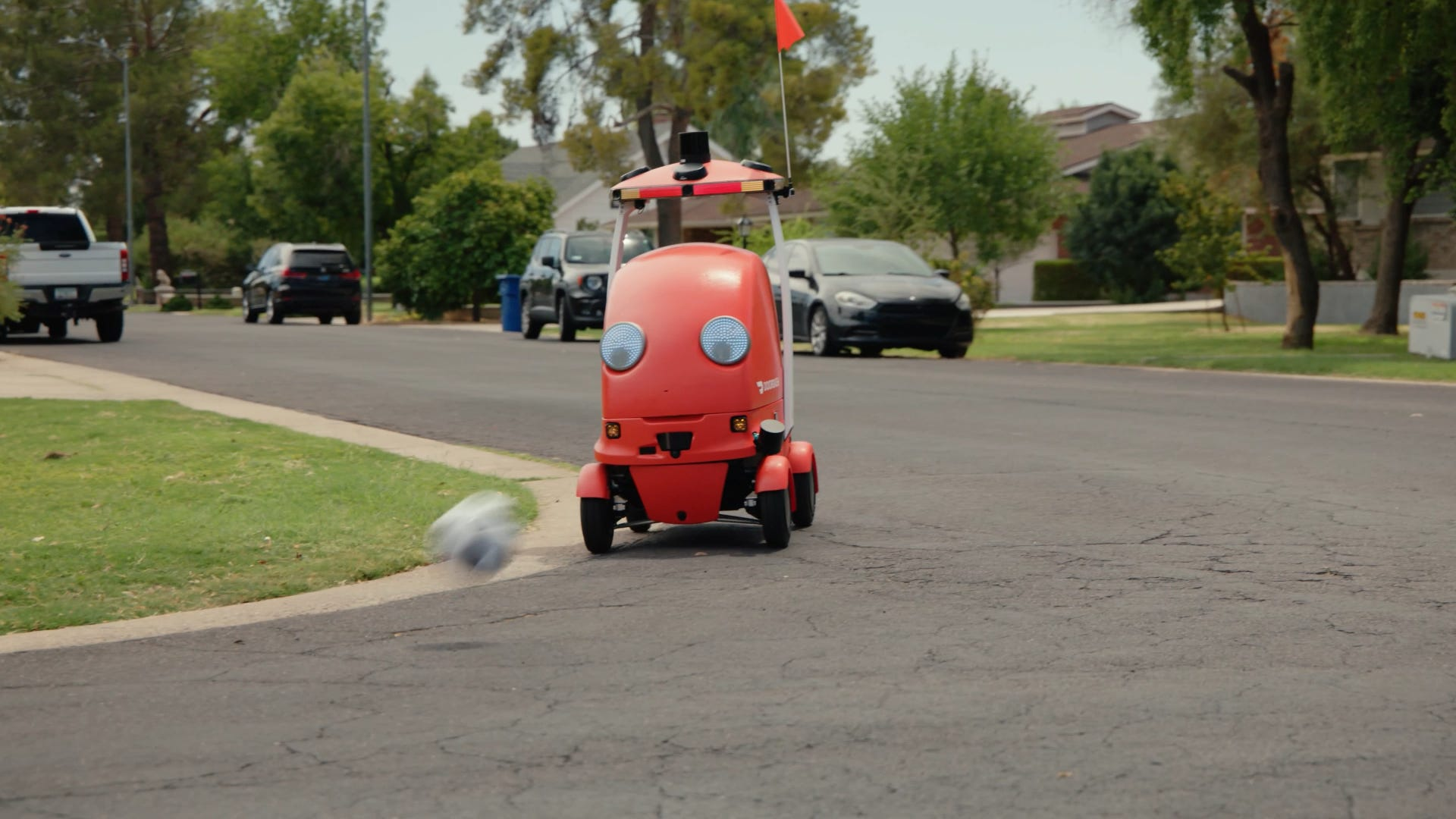
Welcome to the Ride AI newsletter: your weekly digest of news and intelligence at the intersection of technology and transportation.
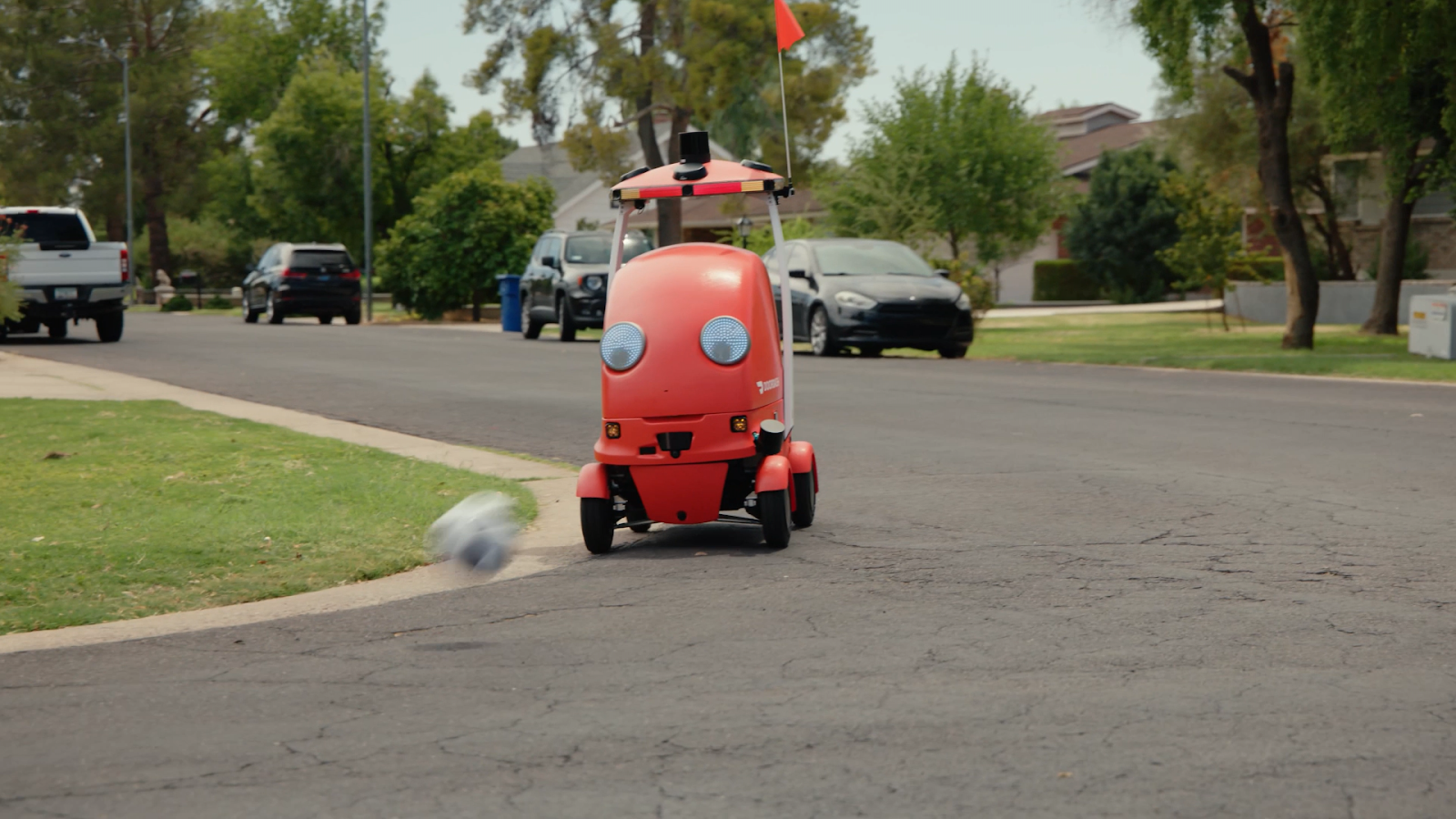
The robot, named Dot, was designed fully in-house by DoorDash Labs and was purpose-built to solve the “last ten feet” problem of on-demand delivery... meaning this bot will roll right up to your front door. During a keynote at the DoorDash headquarters in San Francisco on Monday, the company showed off Dot’s various features, including its large capacity relative to its size, which the company says is 1/10th the size of the average car sold in the United States today to be able to fit within standard bike lanes, while still being able to carry up to 30 pounds of cargo, or six large pizza boxes.
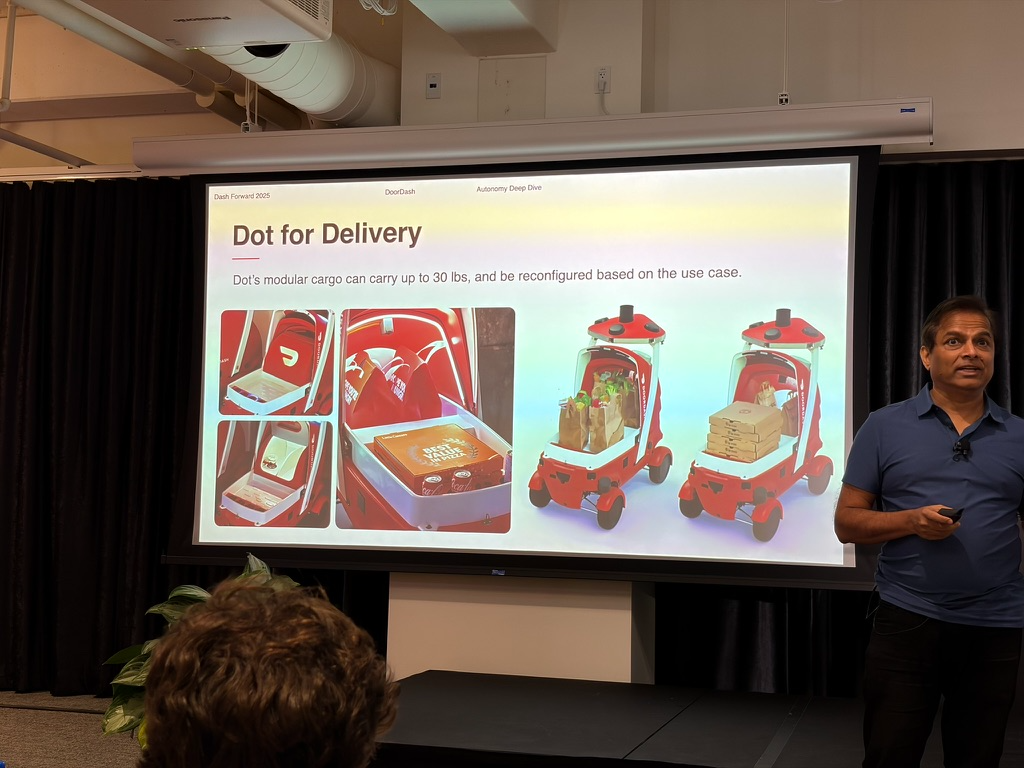
DoorDash also emphasized Dot’s “vision-primary” L4 autonomy stack, which takes advantage of three lidar and four radar sensors in addition to nine cameras to perceive and chart a course through the world around it. While Dot’s autonomy stack currently uses custom lidar sensors, the company said it is working to replace them with off the shelf versions. Dot also has onboard microphones and speakers to interact with humans via a WALL-E-like voice and will emit noises when being interacted with, such as a long “yawn” sound when opening or closing its gaping “mouth”.
I was able to get an up-close look at Dot on Monday at the keynote, and the thing that struck me the most was the emphasis on making Dot as cute and as personable as possible. The robot features oversized eyes and a friendly, bulbous shape… a far cry from the white boxes on wheels typically associated with last-mile delivery robots. When the robot perceives voices around it, the eyes glance toward them, making the bot seem aware and attentive of its surroundings.
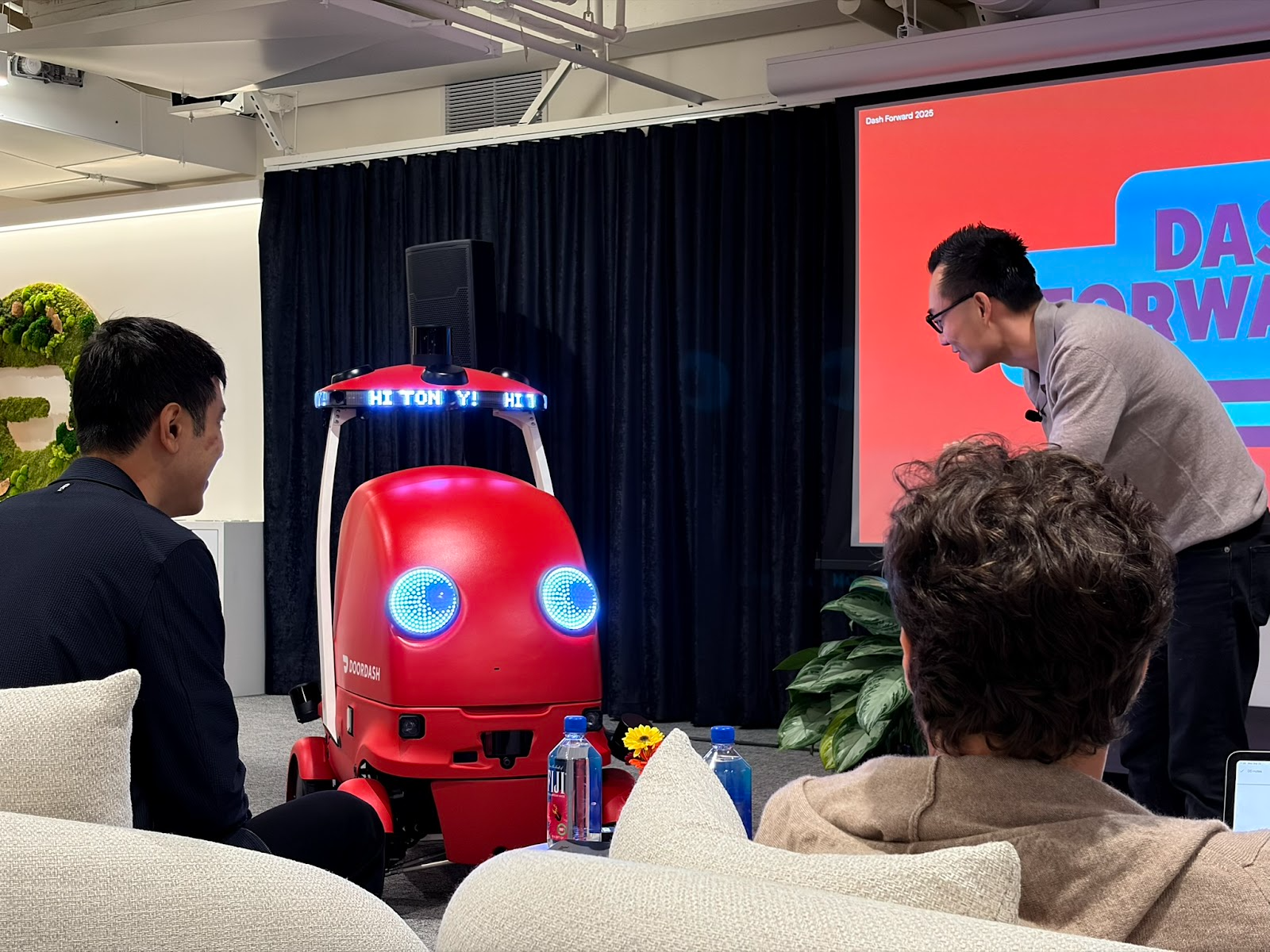
I just can’t shake the thought that Dot looks a lot like the player characters from the video game R.E.P.O.

DoorDash says Dot is currently available in Phoenix, Arizona, where it is doing real deliveries to real customers. We will have Ashu Rege on the Ride AI podcast soon to chat more about Dot and what it means for DoorDash, so look forward to that episode coming soon!

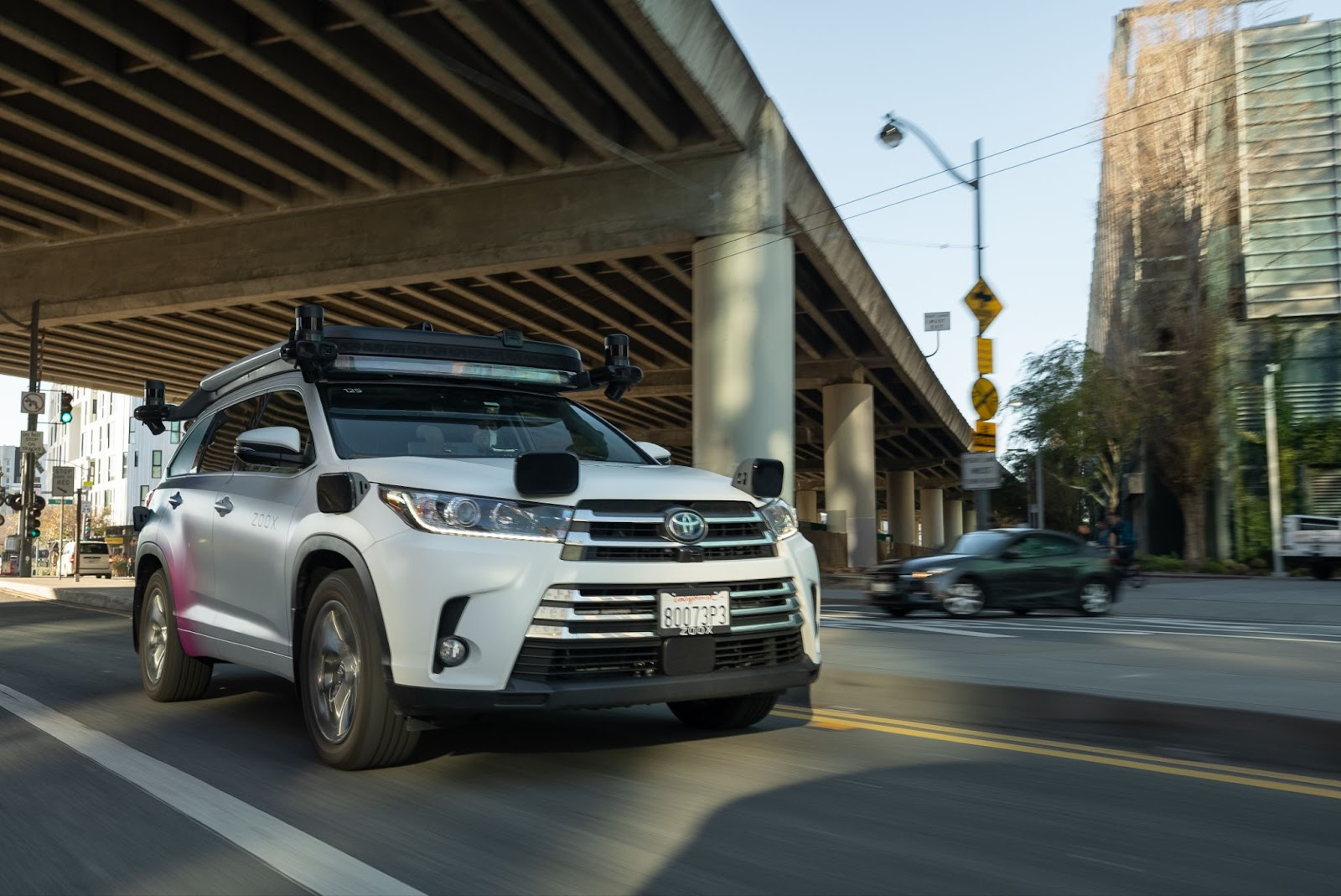
PC: Zoox
This expansion marks Zoox’s eighth testing site, and the first for the company on the East Coast. While Washington D.C. is one of the busiest ride-hailing markets in the United States making it a potentially lucrative service area, it also brings environmental challenges such as unique street layouts, dramatic changes in weather conditions, and snowfall.
Historically, robotaxi companies have put off launching in areas with inclement weather possibilities, with Waymo only just now beginning to push into seasonally snowy regions such as New York, Seattle, and Denver. Now, Zoox is taking that step as well.
The company says it will begin by deploying manually driven testing retrofitted Toyota Highlander mapping vehicles in the heart of Washington D.C. before beginning autonomous testing later this year. A Zoox spokesperson clarified to Ride AI that autonomous testing will be done with its mapping vehicles with a safety driver, instead of the company’s custom built toaster-shaped robotaxis. Washington D.C. currently does not allow vehicles without a safety driver behind the wheel on its roads.
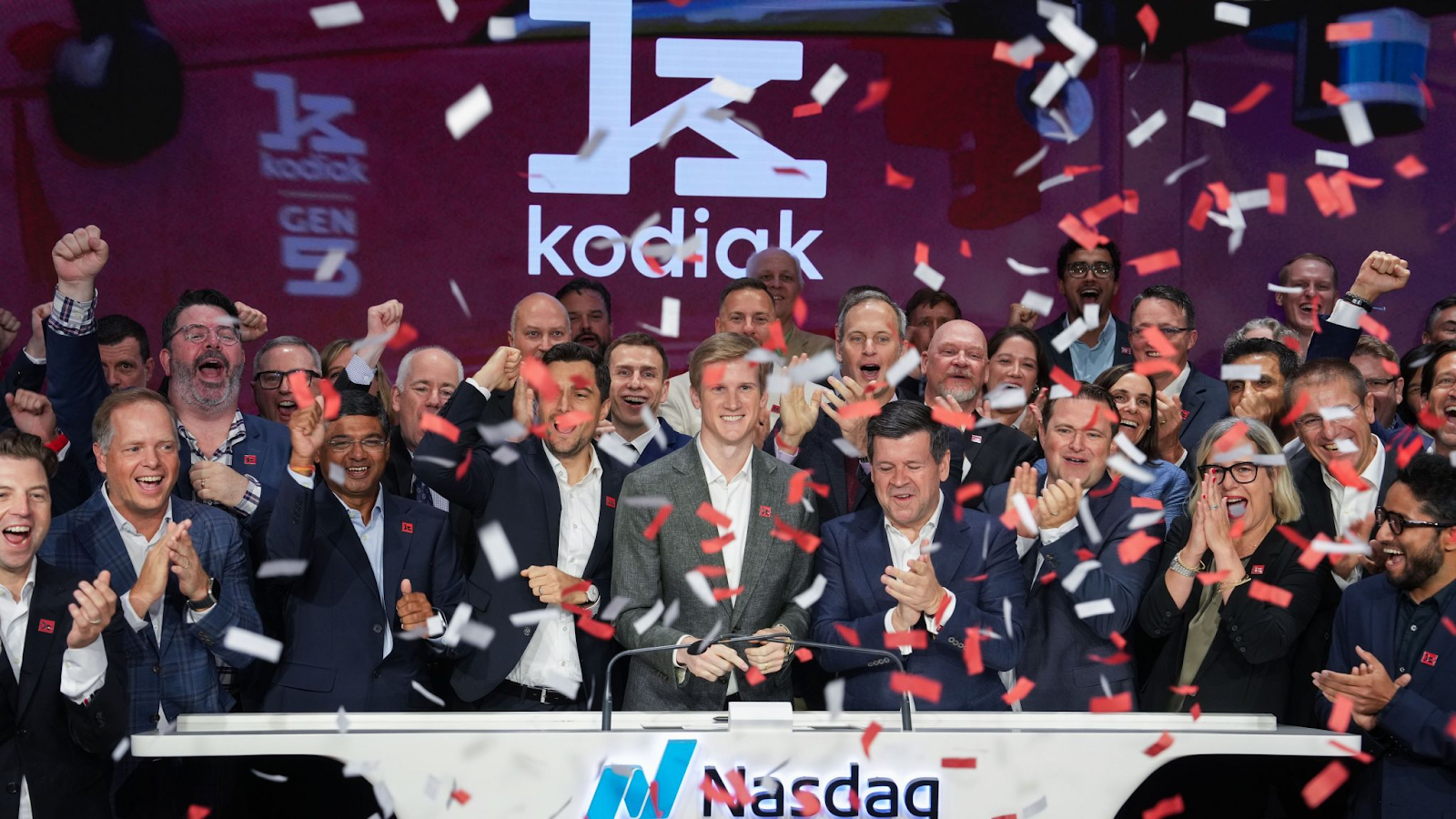
PC: Nasdaq
The Mountain View-based autonomous trucking developer began trading on Nasdaq on September 25 under the symbols KDK and KDKRW following its merger with the Ares Acquisition Corp. II SPAC, with executives ringing the opening bell to mark the debut. The deal, approved by Ares shareholders earlier in the week, values Kodiak at around $2.5 billion and provides more than $212 million in fresh capital from institutional investors.
Kodiak’s focus is on selling its “Kodiak Driver” system through a driver-as-a-service model, where fleets pay per mile or per vehicle for access. Trucks are currently retrofitted by Roush Industries in Michigan, with Atlas Energy Solutions already taking delivery of eight vehicles from an order of 100. Production is expected to scale into the hundreds by 2026. To support operations on public roads, Kodiak has also partnered with Berlin-based remote driving firm Vay, whose stations will allow human operators to step in during specific low-speed scenarios.
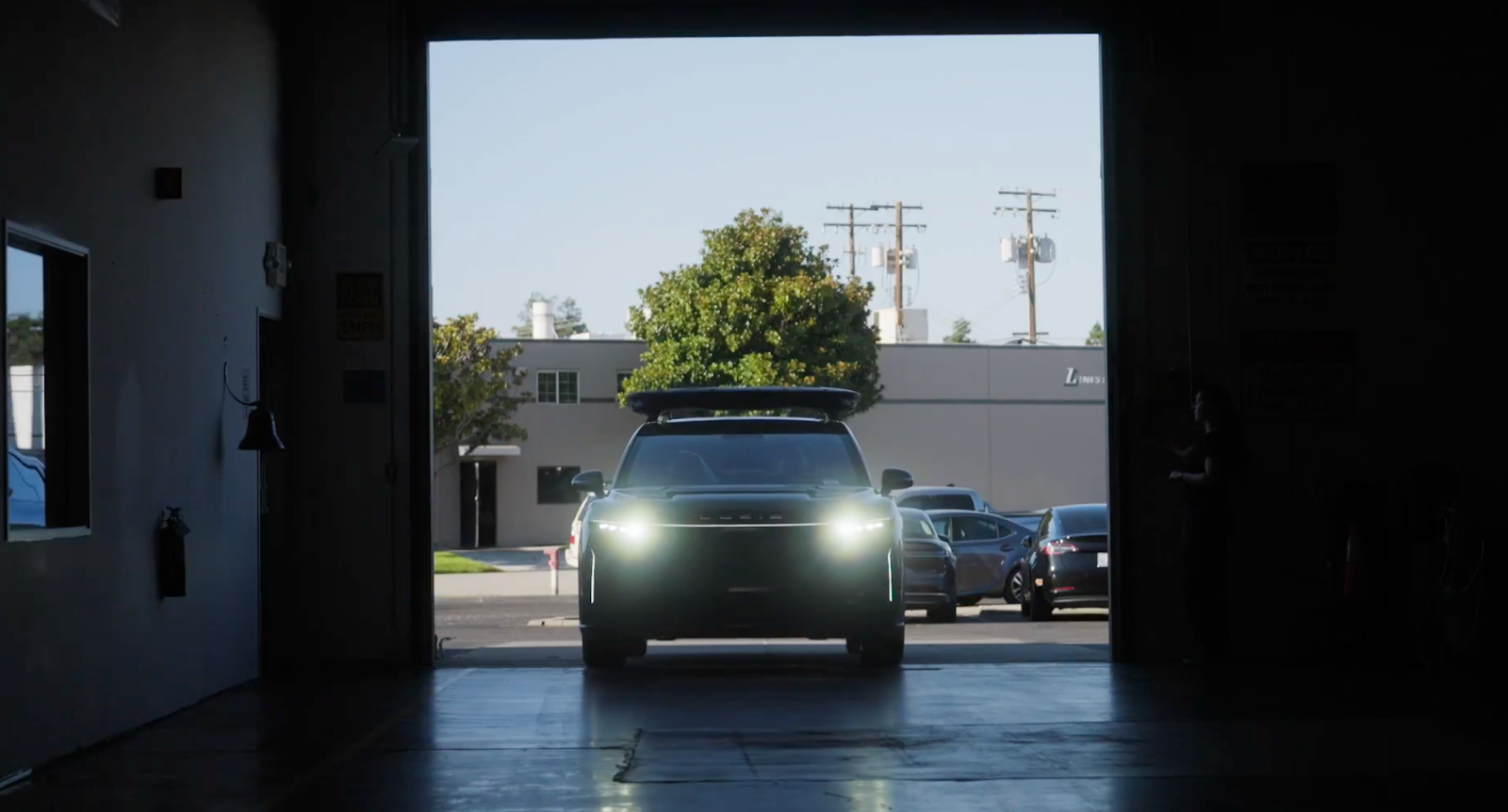
PC: Lucid
The initial Gravity SUV was built at Lucid’s Arizona plant and handed off to Nuro in California, where engineers outfitted it with sensors and autonomy hardware. Testing has now begun at Nuro’s Santa Clara facility with integration of the Nuro Driver software. Future units will be retrofitted directly on Lucid’s assembly line before being deployed to Uber’s ride-hailing network.
The milestone is an early step in what the companies have pitched as a 20,000-vehicle rollout over the next six years. For comparison, Waymo currently operates around 2,000 robotaxis in its fleet, while Tesla’s service in Austin and the Bay Area remains limited to a handful of vehicles with safety drivers.
We dove into the details of the Uber-Lucid-Nuro partnership on our podcast with Nuro COO Andrew Chapin back when the deal had first been announced. You can listen to that episode here.
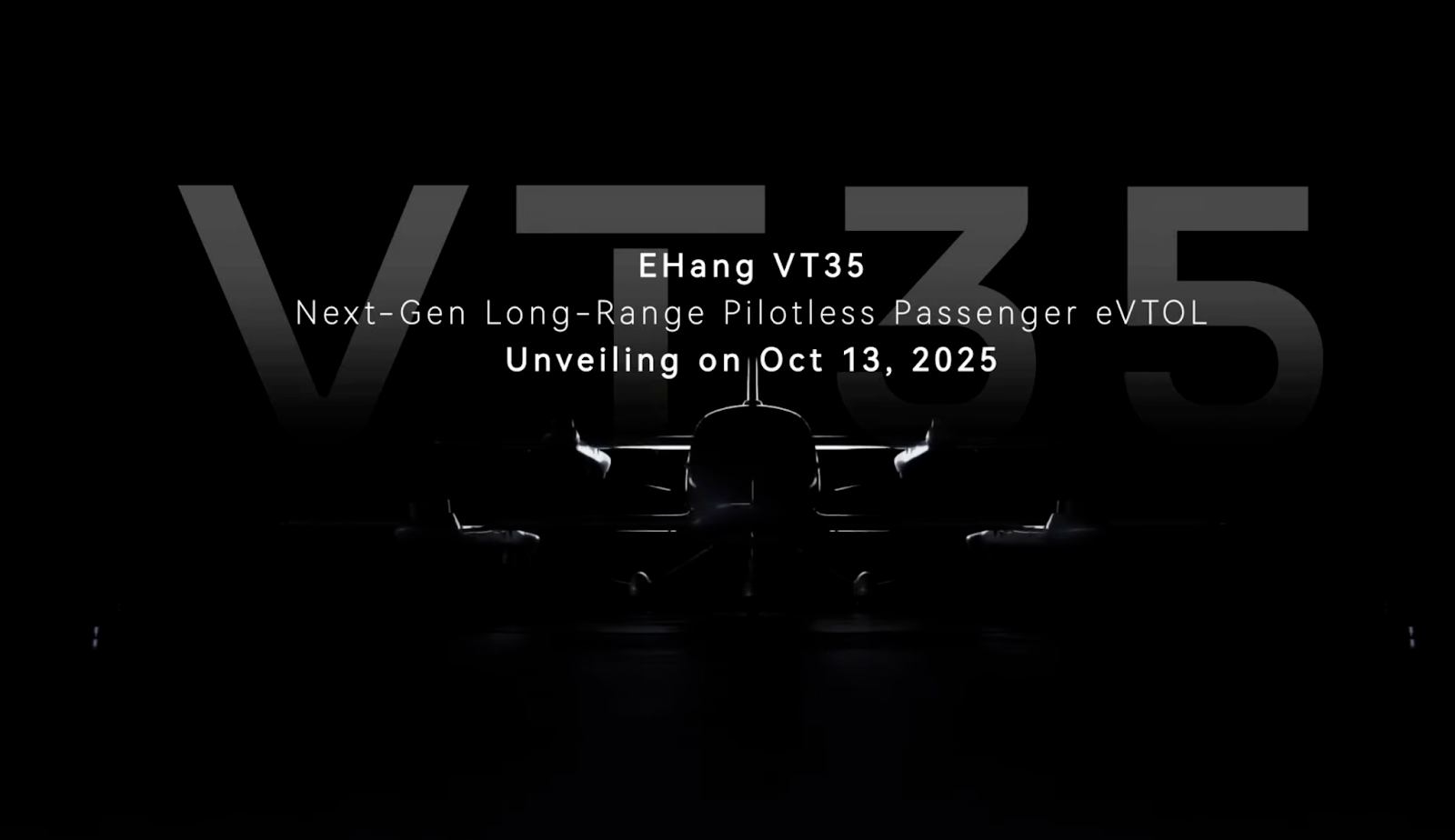
We don’t usually report on rumors, but this is a series of words I have not heard strung together before.
Ehang, a Chinese aircraft manufacturer specializing in electric vertical takeoff and landing (eVTOL) aircrafts, have announced the official unveiling of a long-range, “pilotless”, passenger aircraft to be officially unveiled on October 13th.
The company is based in Guangzhou province, but is expected to establish an R&D and production hub in Anhui province to produce the new aircraft. The project has already secured around the equivalent of $70.2 million USD in government support.
Should I go back to China to risk my life to ride in one? Let me know in the comments below.
This might need some cultural background.
In China, particularly in rural areas, dirt or unpaved roads are often used by farmers or grandmas to sun-dry their crops as they tend to be the closest flat, wide-open areas and are often under-utilized. When those rural areas modernize and the roads become paved, the farmers and grandmas, set in their habits, often continue to use the same roads to sun-dry their crops.
Normally, humans would see the crops being sun-dried and go around. However, it seems in this case, sun-dried crops were not part of the road obstacle training dataset…
For those wondering what the delivery AV is broadcasting on the speaker, it is, “In autonomous mode. Might stop at any time. Please keep a 2 meter distance.”
Alright, that’s it from me… until next week. If you enjoy this newsletter, share it with your friend, colleague, or boss. Thank you for reading; Sophia out!
Get all the latest news in AI x Mobility across the globe.
Continue reading more about the world of robotics, automation, and AI